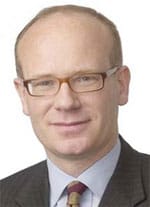United States
 |
|
Marenzi: Interbank lending assertions are puzzling. |
A chorus of dissenting voices has emerged that is challenging the widely held belief that interbank lending markets have dried up, commercial lending is being curtailed, and non-financial commercial paper markets have virtually ground to a halt. The first dissenters were a group of researchers at the Federal Reserve Bank of Minneapolis (FRBM) who published a working paper in October entitled “Facts And Myths About The Credit Crisis.”
In the report the researchers said that Federal Reserve Board and Bloomberg data demonstrated that bank credit had not declined during the financial crisis but indeed appeared to have risen across commercial, industrial and consumer loans. “The…claim that banks have essentially stopped lending to non-bank entities and individuals is false, at least in the aggregate as of October 15,” said the researchers. The claim that interbank lending had also fallen sharply is also false, the researchers argued. The FRBM says the rise in loans is in large part due to non-financial firms drawing on their loan commitments and lines of credit.
Research firm Celent joined the chorus in December with a report, “Flawed Assumptions About The Credit Crisis,” which uses Federal Reserve figures to disprove comments made by Federal Reserve chairman Ben Bernanke and US Treasury secretary Henry Paulson about the dire state of US interbank lending and credit markets.
Marenzi maintains that overall US commercial bank credit reached an “all-time” high of more than $7.2 trillion in October 2008. “The assertion made by Secretary Paulson that banks substantially reduced interbank lending in September 2008 is even more puzzling,” writes Marenzi, pointing to figures that demonstrate interbank lending had risen 22% since the beginning of the credit crisis. He also says that the cost of interbank lending also remains at very low levels.
Worryingly, Marenzi believes that either policymakers have additional undisclosed data available to them that supports their claims, or they are making generalizations based on the situation of a particular set of businesses or banks. “If this is the case, the policy tools being employed may well be the wrong ones,” says Marenzi.



